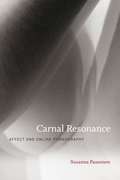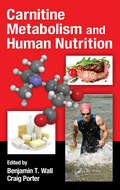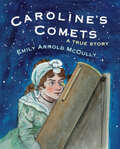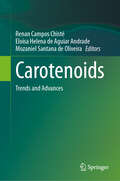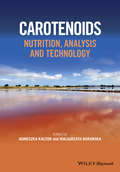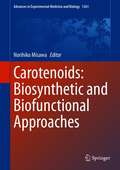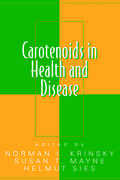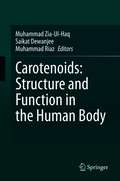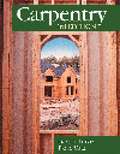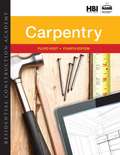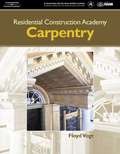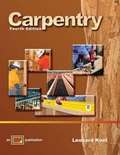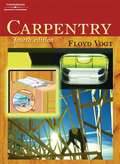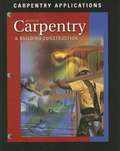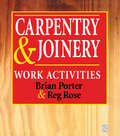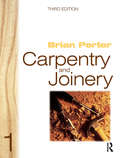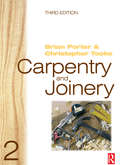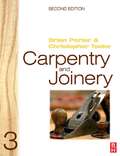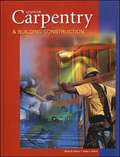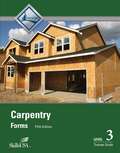- Table View
- List View
Carnal Resonance: Affect and Online Pornography
by Susanna PaasonenDigital production tools and online networks have dramatically increased the general visibility, accessibility, and diversity of pornography. Porn can be accessed for free, anonymously, and in a seemingly endless range of niches, styles, and formats. In Carnal Resonance, Susanna Paasonen moves beyond the usual debates over the legal, political, and moral aspects of pornography to address online porn in a media historical framework, investigating its modalities, its affect, and its visceral and disturbing qualities. Countering theorizations of pornography as emotionless, affectless, detached, and cold, Paasonen addresses experiences of porn largely through the notion of affect as gut reactions, intensities of experience, bodily sensations, resonances, and ambiguous feelings. She links these investigations to considerations of methodology (ways of theorizing and analyzing online porn and affect), questions of materiality (bodies, technologies, and inscriptions), and the evolution of online pornography. <p><p> Paasonen dicusses the development of online porn, focusing on the figure of the porn consumer, and considers user-generated content and amateur porn. She maps out the modality of online porn as hyperbolic, excessive, stylized, and repetitive, arguing that literal readings of the genre misunderstand its dynamics and appeal. And she analyzes viral videos and extreme and shock pornogaphy, arguing for the centrality of disgust and shame in the affective dynamics of porn. Paasonen's analysis makes clear the crucial role of media technologies--digital production tools and networked communications in particular--in the forms that porn takes, the resonances it stirs, and the experiences it makes possible.
Carnitine Metabolism and Human Nutrition
by Benjamin T. Wall Craig PorterCarnitine Metabolism and Human Nutrition offers a contemporary and in-depth look at the biological effects of carnitine metabolism and its application to clinical and sports nutrition, based on decades of robust scientific enquiry. It gathers and distills key results of the last 20 years of carnitine research to provide an invaluable reference tool
Caroline's Comets: A True Story
by Emily Arnold McCullyWith courage and confidence, Caroline Herschel (1750-1848) becomes the first woman professional scientist and one of the greatest astronomers who ever lived. Born the youngest daughter of a poor family in Hanover, Germany, Caroline was scarred from smallpox, stunted from typhus, and used by her parents as a scullery maid. But when her favorite brother, William, left for England, he took her with him. The siblings shared a passion for stars, and together they built the greatest telescope of their age, working tirelessly on star charts. Using their telescope, Caroline discovered fourteen nebulae and two galaxies, was the first woman to discover a comet, and became the first woman officially employed as a scientist--by no less than the King of England. The information from the Herschels' star catalogs is still used by space agencies today. The book includes excerpts from Caroline Herschel's autobiography. A 2018 NSTA-CBC Outstanding Science Trade Book for Students K-12.
Carotenoids: Trends and Advances
by Renan Campos Chisté Eloisa Helena de Aguiar Andrade Mozaniel Santana de OliveiraCarotenoids are one of the most important groups of bioactive compounds in nature. They have been used in the food, cosmetic and pharmaceutical industries due to their wide range of chemical and biological properties. Currently, industrial use of carotenoids comes from chemical synthesis, but greener and biotechnological engineering approaches for carotenoid production are coming into focus. The public has also become aware of the therapeutic and health benefits of carotenoids, making them an increasingly popular with consumers. Carotenoids: Trends and Advances focuses on recent advances in biosynthesis of carotenoids in foods, plants, microorganisms and insects as well as health benefits and therapeutic uses. Advanced production techniques and technologies are focused on, including biotechnological engineering approaches and agricultural methods. Recent approaches for the bioaccessibility and bioavailability of carotenoids are covered infull. The preservation of the bioactivity of carotenoids through encapsulation and biofortification is a major focus, with extensive coverage of green processes. The text provides a comprehensive update for researchers across a wide range of relevant industries interested in the most current advances in carotenoids.
Carotenoids: Nutrition, Analysis and Technology
by Agnieszka Kaczor Malgorzata BaranskaCarotenoids are an essential component of the human diet. Bioactive by nature, they are rich in antioxidants, promote vitamin A activity and lower the development of chronic illnesses. As such they are an area of growing interest to researchers and scientists who are working to design, develop and launch new functional food products, dietary supplements and other nutritional solutions. Carotenoids: Nutrition, Analysis and Technology is an up-to-date overview of the key areas of carotenoids in nutrition, therapy and technology. In the first section, the authors present a functional food perspective, outlining the therapeutic applications of the bioactive pigments. The second part is dedicated to the spectroscopic analysis of carotenoids, providing in-depth scientific methods and real research findings. In the final section, various technological applications of carotenoids are considered, including biotechnology and future prospects. Written by international experts in the field, this comprehensive book will be of interest to food scientists and researchers, nutritionists and health food companies. It will be of particular use to anyone involved in the spectroscopic analysis of carotenoids and other related bioactives.
Carotenoids: Biosynthetic and Biofunctional Approaches (Advances in Experimental Medicine and Biology #1261)
by Norihiko MisawaThis book provides a comprehensive overview of carotenoid biosynthesis by different organisms, including bacteria, archaea, fungi, arthropods, and plants. Carotenoids are thought to provide health benefits in areas such as cancer, diabetes, osteoporosis, NAFLD, NASH, obesity, age-related functional decline, and as a result, they have received an increasing amount of attention.With contributions from leading experts in biology, biotechnology, and chemistry of carotenoid research, this volume discusses the biological functions of carotenoids such as astaxanthin, β-cryptoxanthin, and fucoxanthin, in addition to paprika carotenoids, capsanthin, and capsorubin. It also reveals the technologies behind the commercial production of some functional carotenoids.The book is targeted for academic and industrial readers in biology, biotechnology, nutrient physiology and related fields.
Carotenoids in Health and Disease (Oxidative Stress And Disease Ser. #Vol. 15)
by Norman I. Krinsky Susan T. Mayne Helmut SiesThe first source to collect the latest evidence linking carotenoids to human health and disease, this stimulating reference studies the role of carotenoids in the prevention of chronic disease and reviews breakthrough studies from more than 40 field authorities on the latest research. The book reveals the most recent findings regarding the use of c
Carotenoids: Structure and Function in the Human Body
by Muhammad Riaz Muhammad Zia-Ul-Haq Saikat DewanjeePlants produce chemicals as part of their normal metabolic activities. These include primary metabolites found in all plants, such as sugars and fats, as well as secondary metabolites, which can have therapeutic effects in humans and be refined to produce drugs. Plants synthesize a bewildering variety of phytochemicals, but most are derivatives of a few biochemical motifs. Numerous herbal-derived substances have been evaluated for their therapeutic potential. These include alkaloids, coumarins, saponins, plant pigments and flavonoids. Flavonoids, carotenoids and anthocyanins are probably the best known of these substances due to their antioxidant properties. Carotenoids: Structure and Function in the Human Body presents comprehensive coverage of carotenoids. The text covers the scientific literature and clinical significance of this organic pigment, with an emphasis on its therapeutic potential. The authors approach carotenoids from a range of perspectives, from their structural and physicochemical properties to their distribution in nature, interaction with the human metabolism, and use as a coloring agent in various products. The intake, metabolism and secretion of anthocyanins in the human body are covered in-depth, as are the biosynthetic pathways through which these compounds are synthesized in the natural system. Factors affecting stability and extraction are listed, and health-related uses and biological activities are covered in great detail. Present and future trends in carotenoid research are also presented. This book provides a solid background in carotenoids for researchers and professionals in food science, food technology, nutrition, biology, chemistry and medical sciences.
Carpentry (Construction/Building Trades Series)
by Gaspar J. Lewis Floyd VogtCarpentry, 3 E continues to provide readers with all of the information needed to construct a light-frame building, from start to finish including concise explanations and detailed diagrams. Whether they are looking for insight into how best to locate a structure on a site, or methods for installing the foundation, framing the structure, finishing interior and exterior surfaces, or finishing floors or installing cabinetry, readers will find the answers they seek in this all-new edition of our best-selling carpentry book.
Carpentry
by Floyd VogtDeveloped in partnership with the National Association of Home Builders (NAHB) and its Home Builders Institute (HBI), this book offers a visual, step-by-step approach to learning how to build a home, while guiding you through the development of essential workplace skills. RESIDENTIAL CONSTRUCTION ACADEMY: CARPENTRY, 4E is constructed within a modular design, with current and concise information crafted logically to help you master the skills you need for professional success. From start to finish, this book systematically steps you through the construction industry, and the carpentry techniques, code requirements, and best practices associated with constructing a residential building, including coverage of tools and materials, rough carpentry, exterior and interior finishes and more.
Carpentry
by Floyd VogtPart of our new Residential Construction Academy series, Carpentry introduces users to skills and information required to work professionally on any job site. Based on nationally-recognized standards set by the construction industry, this handbook is organized into four sections:
Carpentry (4th edition)
by Leonard KoelCarpentry 4th Edition contains carpentry procedures commonly practiced in the trade. New/expanded content areas include current federal safety regulations, engineered materials, solar energy, and trade associations and organizations. Trade tips are given for project phases from foundation to interior finish.
Carpentry (4th Edition)
by Floyd VogtThe intricate system of contemporary light frame building construction is presented in straightforward, step-by-step procedures in this popular bestseller. Carpentry, 4th Edition follows the logical path of a residential project, using reader-friendly presentations and easy-to-follow diagrams to explore building plans, sitework and layout, footings and foundations, framing, interior and exterior surfaces, cabinetry and flooring, and more. This new edition provides a unique blend of all the need-to-know information for both traditional and up-to-date construction practices. Beginning with the layout of the building and finishing with trim carpentry, each section features step-by-step procedures for key carpentry jobs critical safety information, tips of the trade, and insight into the construction industry.
Carpentry and Building Construction
by Mark D. Feirer John L. FeirerThis book has been designed as a basic text for students in wood technology classes at the high school, vocational school, and community junior college levels.It will also be helpful to those in apprenticeship training and to do-it-yourselfers who wish to undertake building or remodeling projects.
Carpentry and Building Construction: Safety Guidebook
by Glencoe Mcgraw-HillThis comprehensive carpentry textbook focuses on residential construction that is also applicable for light commercial construction.
Carpentry and Building Construction: Carpentry Applications
by Glencoe Mcgraw-HillProvides skill-building job sheets with illustrated instructions for carpentry procedures.
Carpentry and Building Construction (Carpentry Math)
by Glencoe Mcgraw-HillThis carpentry textbook focuses on math used in construction.
Carpentry and Joinery: Work Activities
by Chris TookeThis highly illustrated textbook is written to meet the needs of candidates studying for the NVQ levels 2 and 3 in Carpentry and Joinery, and other courses at this level. Each chapter covers a specific activity such as constructing stairs or windows and includes the selection of produced components, setting out, marking out, assembly and fixing.The book contains references to the companion volume by the same authors (Bench and Site Skills) and to the relevant regulations and standards. Together with Carpentry and Joinery: Bench and Site Skills this book will form an invaluable resource for students long after they qualify.Brian Porter and Reg Rose were both formerly lecturers at the Leeds College of Building. They are authors of several successful books on carpentry and joinery.
Carpentry and Joinery 1
by Brian PorterThe third edition of Carpentry and Joinery 1 is the first in a series of three books which together provide an authoritative but thoroughly practical guide to carpentry and joinery for students following City & Guilds and CITB courses, NVQ candidates, and a wide range of amateurs and professionals.Carpentry and Joinery 1 deals with the fundamentals of the subject from topics such as timber and wood preservation and protection, to a detailed outline of the tools available and information on the basic woodworking joints, adhesives and fixing devices. Books 2 and 3 show how to apply this fundamental knowledge. Details of craft theory, associated studies and practical procedures are integrated throughout each text. In this new edition chapters have been reorganised to produce a more coherent, student-focused course. All references to the Building Regulations and current legislation have been updated, and developments in current best practice have been incorporated.
Carpentry and Joinery 2, 3rd ed
by Chris Tooke Brian PorterCarpentry and Joinery 2 is the second in a series of three books, which together provide an authoritative and thoroughly practical guide to carpentry and joinery for students following City & Guilds and CITB courses, NVQ candidates, and students working towards an Institute of Carpenters qualification. This book is also ideal for a wide range of amateur and professional woodworkers. Volume 2 builds on the fundamental knowledge introduced in volume 1, by covering more advanced topics and procedures, including machine tools. Essential ‘back-up’ topics are presented throughout the text to revise the key aspects covered in volume 1. The reader is shown how to apply this basic theory to actual carpentry and joinery practice in a highly illustrated, easily accessible text.The third edition has been fully updated in line with changes to the Building Regulations and current legislation, the third edition also incorporates developments in current best practice, with a comprehensive match to the latest qualifications in Wood Occupations.
Carpentry and Joinery 3
by Chris Tooke Brian PorterCarpentry and Joinery 3 is the third in a series of three books, which together provide an authoritative and thoroughly practical guide to carpentry and joinery for students following City & Guilds and CITB courses, NVQ candidates, and students working towards an Institute of Carpenters qualification. This book is also ideal for a wide range of amateur and professional woodworkers. Volume 3 builds on the fundamental knowledge introduced in volume 1, and accompanies volume 2 with coverage of additional advanced topics and procedures, including working with particular door and window types. The reader is shown how to apply the basic theory introduced in volume 1 to actual carpentry and joinery practice in a highly illustrated, easily accessible text.This second edition has been fully updated in line with changes to the Building Regulations and current legislation, the third edition also incorporates developments in current best practice, with a comprehensive match to the latest qualifications in Wood Occupations.
Carpentry and Joinery Book 1
by David R. BatesThis book provides the apprentice or trainee carpenter and joiner with the basic technical knowledge necessary to complete the first half of a City and Guilds Course in Carpentry and Joinery. It will also be a useful reference to any persons studying for examinations, or simply wishing to further their knowledge in one of the associated areas, such as wood machining, cabinet making or general building construction. Dealing with the basic skills and techniques employed in the present day construction industry, the text assumes little prior knowledge of the subject, but lays before the reader a simple, straight forward and readable out of the skills, tools, materials and methods likely to be used or encountered in the workshop, on site or during studies at home or in college.
Carpentry and Joinery Book 2
by David R. BatesComplementing Book 1of the same title, this text takes the student up to the City and Guilds full Craft Certificate level. All aspects of the course are dealt with, along with the associated scientific background, mathematical calculations and drawings required. Although prior knowledge of the subject as provided in Book 1 is assumed , important principles are repeated so that this book can be read independently of the companion volume. Extensively illustrated, each chapter begins with clearly defined objectives and concludes with a series or questions and assignments. The text will prove invaluable as a general workbook for those following advanced woodworking courses, including CITB students and self-employed carpenters, joiner and builders. It is useful supplementary reading for those taking courses in brickwork and cabinetmaking, for trainee woodworking machinists and construction technicians as well as for students of City and Guilds Foundation courses.
Carpentry & Building Construction (Sixth edition)
by Mark D. Feirer John L. FeirerCarpentry & Building Construction retains its focus as an essential text for students of carpentry and general wood technology. This edition maintains a detailed coverage of wood framing techniques.
Carpentry Forms Level 3 Trainee Guide
by NccerThis exceptionally produced trainee guide features a highly illustrated design, technical hints and tips from industry experts, review questions and a whole lot more! Key content includes: Rigging Equipment, Rigging Practices, Properties of Concrete, Reinforcing Concrete, Handling and Placing Concrete, Trenching and Excavating, Foundations and Slab-On-Grade, Vertical Formwork, Horizontal Formwork, and Tilt-Up Wall Panels.
